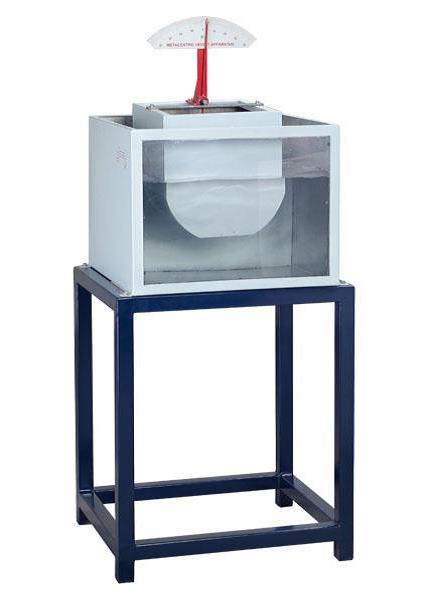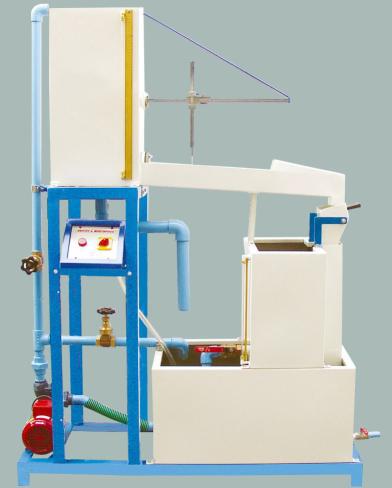Stress and Strain Analysis Membrane
Categories:Stress and Strain Analysis Membrane Technical Description: In experimental stress and strain analysis, strain gauges are used to determine stresses and strains in components and structures. The maxim...
Product
Description
Stress and Strain Analysis Membrane
Technical Description:
In experimental stress and strain analysis, strain gauges are used to determine stresses and strains in components and structures. The maximum stresses and strains are key variables in terms of the structure, and ultimately dictate the design of a component. Strain gauges provide the means required to evaluate mechanical stress and strains. The experimental unit can be used to measure the deflection and strain of a disc under different pressure loads. For the purpose, a thin disc - also termed a membrane or diaphragm - is clamped into place and subjected to pressure. A cylinder with a hand-operated piston generates pressure in a maintenance-free hydraulic system. This pressure is indicated on a gauge. Strains on the surface of the membrane are recorded by strain gauges. The layout of the strain gauges at optimally selected points provides a comprehensive view of the stresses and strains all over the disc. The maximum stresses and strains are calculated, applying the appropriate equations of elasticity. To assist and visualise evaluation of the experiment, the measurement data can be imported into the application software. At the same time, the deflection of the membrane is measured by a dial gauge. The dial gauge can be moved along a cross-arm, enabling measurements to be taken at any radius. The well-structured instructional material sets out the fundamentals and provides a step-by-step guide through the experiments.
Specification:
1. Investigation of the deflection and strain of a thin disc under internal pressure 2. Strain gauge configured as half-bridge 3. Strain gauges measure the radial and hoop strain 4. Dial gauge with scale, adjustable mounting 5. Measurement of deflection possible at any radius 6. Hydraulic cylinder with hydraulic pump to generate pressure 7. Hermetically sealed hydraulic system, maintenance-free 8. Multi-pin connector for measurement amplifier FL 151 providedTechnical Data:
Aluminium disc
- outer diameter: d=230mm - diameter used in experiment: d=200mm - thickness: 3mm
Strain gauge application
- 8 strain gauges: half-bridges, 350 Ohm - gauge factor: 2,00 +/-1% - supply voltage: 10V
Dial gauge
- 0...20mm, graduations: 0,01mm
Pressure gauge
- 0...1bar, accuracy: class 1.0 System pressure: max. 0,6bar
quick overview :
Stress and Strain Analysis Membrane
Technical Description:
In experimental stress and strain analysis, strain gauges are used to determine stresses and strains in components and structures. The maximum stresses and strains are key variables in terms of the structure, and ultimately dictate the design of a component. Strain gauges provide the means required to evaluate mechanical stress and strains. The experimental unit can be used to measure the deflection and strain of a disc under different pressure loads. For the purpose, a thin disc - also termed a membrane or diaphragm - is clamped into place and subjected to pressure. A cylinder with a hand-operated piston generates pressure in a maintenance-free hydraulic system. This pressure is indicated on a gauge. Strains on the surface of the membrane are recorded by strain gauges. The layout of the strain gauges at optimally selected points provides a comprehensive view of the stresses and strains all over the disc. The maximum stresses and strains are calculated, applying the appropriate equations of elasticity. To assist and visualise evaluation of the experiment, the measurement data can be imported into the application software. At the same time, the deflection of the membrane is measured by a dial gauge. The dial gauge can be moved along a cross-arm, enabling measurements to be taken at any radius. The well-structured instructional material sets out the fundamentals and provides a step-by-step guide through the experiments.
Specification:
1. Investigation of the deflection and strain of a thin disc under internal pressure 2. Strain gauge configured as half-bridge 3. Strain gauges measure the radial and hoop strain 4. Dial gauge with scale, adjustable mounting 5. Measurement of deflection possible at any radius 6. Hydraulic cylinder with hydraulic pump to generate pressure 7. Hermetically sealed hydraulic system, maintenance-free 8. Multi-pin connector for measurement amplifier FL 151 providedTechnical Data:
Aluminium disc
- outer diameter: d=230mm - diameter used in experiment: d=200mm - thickness: 3mm
Strain gauge application
- 8 strain gauges: half-bridges, 350 Ohm - gauge factor: 2,00 +/-1% - supply voltage: 10V
Dial gauge
- 0...20mm, graduations: 0,01mm
Pressure gauge
- 0...1bar, accuracy: class 1.0 System pressure: max. 0,6bar
Product
Reviews
add Review
reviews
No Review Yet.
Copyrights © 2025 All Rights Reserved by Atico














Product
Reviews
add Review
reviews
No Review Yet.